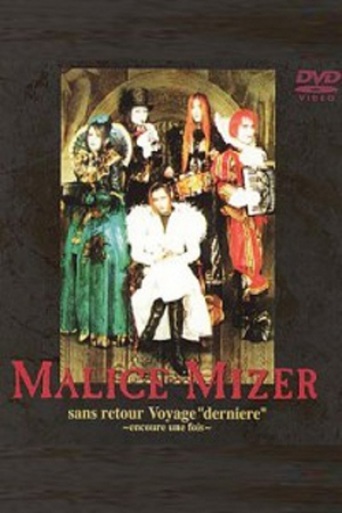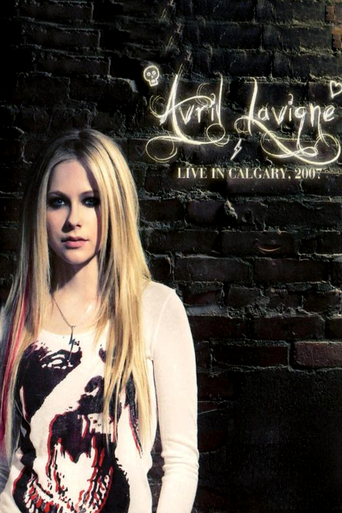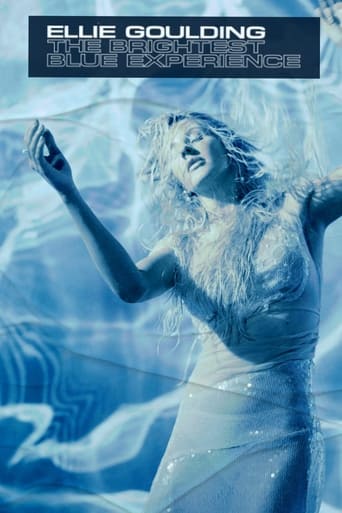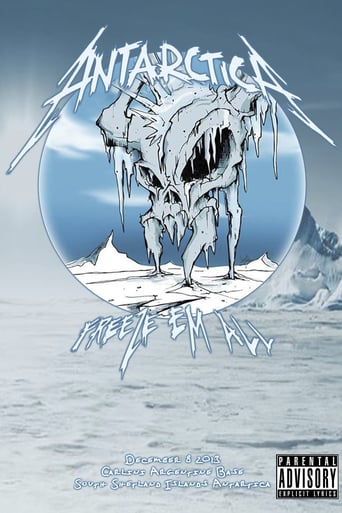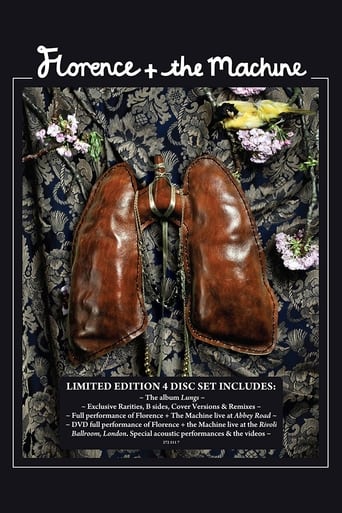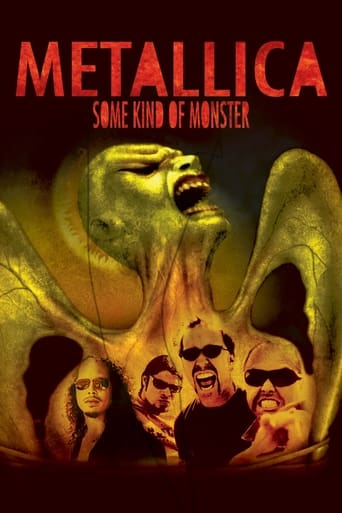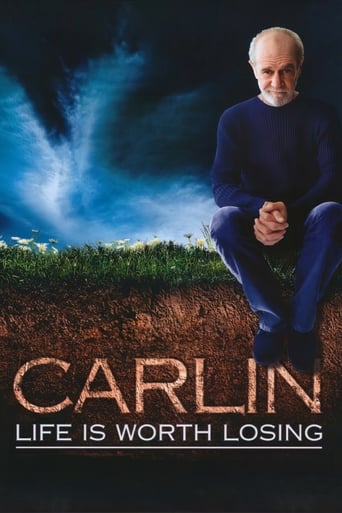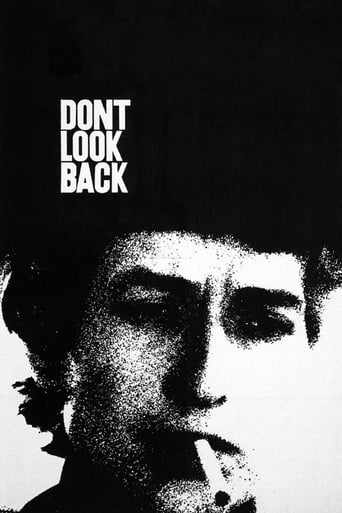
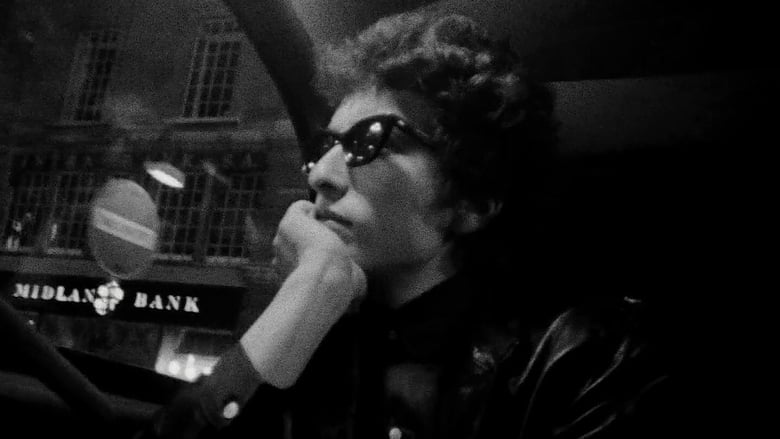
Dont Look Back (1967)
In this wildly entertaining vision of one of the twentieth century’s greatest artists, Bob Dylan is surrounded by teen fans, gets into heated philosophical jousts with journalists, and kicks back with fellow musicians Joan Baez, Donovan, and Alan Price.
Watch Trailer
Cast
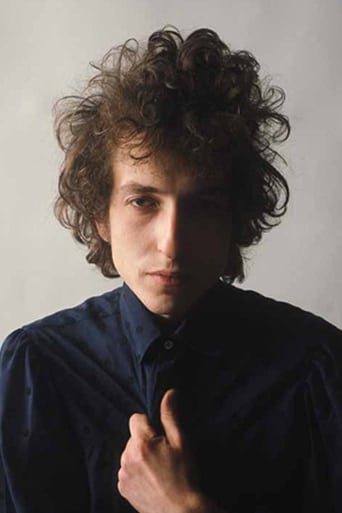
Similar titles
Reviews
A very feeble attempt at affirmatie action
The film makes a home in your brain and the only cure is to see it again.
Easily the biggest piece of Right wing non sense propaganda I ever saw.
This is a dark and sometimes deeply uncomfortable drama
I wonder how many of the people saying how Dylan put Donovan in his place singing "baby blue" are really saying that because either they think it's a better song, or they just like Dylan better? Expecting down votes, but in that scene Donovan's song was much better - guitar work nothing major for either one, but his voice and singing was much better.With that out of the way, Dylan is not a favorite. But I still found this pretty interesting as a snapshot of the times and to see the debates with the press. It kind of confirms how Dylan wanted to play the 'artist' but knew that being difficult with the press would actually sell more records and help give him the credibility he wanted so much.So even if you aren't of a certain age, or don't think Dylan was the big thing, you might still like this as a look back to a different time.
This celebrated documentary chronicles Bob Dylan's 1965 tour of the United Kingdom in which he still plays a solo acoustic folk set; in fact, it takes care to touch briefly on his beginnings as a troubadour in Greenwich Village and socio-political gatherings. Even so, the film starts out with a pre-credits sequence showing in its entirety the iconic video of Dylan's "Subterranean Homesick Blues" which, of course, features famed beatnik writer Allen Ginsberg as a bemused onlooker. The song had been the opener of his ground-breaking album "Bringing It All Back Home" (although it was also known in some quarters by the name of the song itself) which signalled in no uncertain terms his change of pace in musical direction via a total embrace of the electric sound of Rock music.Although Dylan went to England just as Beatlemania had peaked, he does not get to meet them here although the band are announced as being in the audience of one of his concerts; incidentally, his notoriously hazy meeting with John Lennon in a taxicab would be ever so briefly captured for posterity in Dylan's own ragged follow-up film, EAT THE DOCUMENT (1972) which, while also shot by Pennebaker the following year, was compiled by Dylan himself and one Howard Alk (who is his right hand-man throughout DON'T LOOK BACK itself). Indeed, Dylan – who is accompanied by his heavy-set bespectacled manager Albert Grossman and fellow folk icon Joan Baez – is here seen seeking out the company of such British 'rivals' as Alan Price (who had just left The Animals at the time; lest we forget, the band's biggest hit, "House Of The Rising Sun", had previously been recorded by Dylan himself on his 1962 self-titled debut album) and Donovan who were, likewise, talented musicians struggling to reach further out into the Pop world. Dylan is often heard being cynical of Donovan beforehand but their eventual meeting in the former's dressing-room – where he regales the Scotsman with a rendition of "It's All Over Now, Baby Blue" (the closing track from the aforementioned "Bringing It All Back Home" album) – is one of the highlights of the film.Other memorable sequences show Dylan composing on a typewriter(!) in his hotel room as Joan Baez is propped up nearby singing on a sofa and strumming a guitar; Grossman negotiating Dylan's upcoming TV appearances with a local promoter; Dylan going apeshit when an inebriated local throws something out of his hotel room window and Dylan's entourage get blamed for the ensuing fracas!; Dylan arguing about his enigmatic persona with a skeptical interviewer; and doing the reverse with a nerdy layman fan who keeps following him around (aided by the occasional sarcastic interjection from Alan Price)! The film is eventually capped by an unforgettable closing line and image: "Give the anarchist a cigarette" uttered by a shade-wearing Dylan as he looks out the window of his travelling car at English nightlife.The title of the film instantly reminds one of a lyric in Dylan's contemporaneous song, "She Belongs To Me" (the second track off of the "Bringing It All Back Home" album) but, according to Pennebaker himself, the similarity was purely coincidental! Regrettably, the film never shows the live performances or press conferences in their entirety but the snippets shown of both work remarkably well in 'explaining' to uninitiated viewers (and almost half-a-century later at this juncture) the sheer magnitude of Dylan's music and personality at that point in his career when, it must be said, he was all of 23 years old! DON'T LOOK BACK has been released as a "Special Edition DVD" but I actually acquired it via a hardsubbed Italian TV transmission, recorded as a double-feature with Jim Jarmusch's Neil Young concert feature, YEAR OF THE HORSE (1997)!
Do you know that feeling when a song captures you completely? One minute there's all these thoughts running around in your head and the next minute someone switches the radio on and it's kinda like it screams, STOP!You can feel it. You let your whole being be absorbed by it. You're on a high. Then you catch your breath . . . Bob Dylan, as depicted in Don't Look Back, is the kind of megastar that can grip you emotionally and intellectually. While their neighbours joined screaming mobs that bayed at the Beatles, Bob Dylan fans listen in rapt silence, taking in every word."How many times must the cannon balls fly - Before they're forever banned? The answer, my friend, is blowin' in the wind, The answer is blowin' in the wind."He inhabits a hallowed quality. Anti-war protesters, educated and disenchanted youth, all see him as their hero. An emblem of hope. Dylan inspired people. Made them feel they could make a difference. Somehow make it a better world.It was also the Swinging Sixties. Music videos hadn't been invented. In cinema, TV commercials director Richard Lester had kicked off a style of pop musical with the Beatles in A Hard Day's Night (1964). Andy Warhol projected live footage of a band to heighten a live performance (The Velvet Underground and Nico, 1966). Whereas for the opening scene of D.A. Pennebaker's film, Don't Look Back, a deadpan Dylan simply discards one large white card after another. They contain random words from the overlaid soundtrack song, Subterranean Homesick Blues.That scene has been copied and parodied. Like the kiss-on-the-beach-at-the-edge-of-the-waves in From Here To Eternity, far more people know of and recognise the scene than have ever seen the film. Words are deliberately misspelt. Alan Ginsberg haunts the background as if he's wandered in from another film lot. The scene became one of the first 'music videos'. And the film became one of the early examples of fly-on-the-wall cinema.Don't Look Back is one of the important movies of the decade for its development of cinema verité, a documentary style with many offshoots but at that point made possible with the new lightweight cameras and sound recorders. These were less intrusive and meant that events could be recorded in a way less staged, the filmmakers having opportunity to follow subjects down corridors or seemingly eavesdrop on conversations.Don't Look Back follows Bob Dylan through his most iconic phase, dark glasses and leather jacket, on his 1965 UK tour at the height of his fame. (He is about to dispense with a rustic folksy style and upset fans by embracing rock and roll and electric guitars.) It is the Bob Dylan so cryptically emulated by Cate Blanchett in I'm Not There. This is the legend. And the man who became a legend in his own lifetime, constantly reinventing his poetry. He would one day be awarded a special Pulitzer Prize for his "profound impact on popular music and American culture, marked by lyrical compositions of extraordinary poetic power." Not to mention an honorary degree from the prestigious St Andrews University in Scotland.The follow-the-tour format is a little like In Bed With Madonna. But the immediacy of the film foreshadow movies like Control. Stark black and white photography and a personality that dominates the screen without even trying. Joan Baez (who was near the end of an affair with Dylan) is singing in a hotel room. Dylan looks up with rapt attention (and obvious admiration) for the shy young folk singer Donovan. And clips from his sell-out Albert Hall concert. Throughout and in sharp contrast to almost everyone else captured in all their bygone sixties primness Dylan still looks cool and self-assured in his own skin even by 21st century standards. Somehow his image hasn't aged.There was something almost mystical about Dylan at the time. Press conferences in the film (that would also be re-staged later in I'm Not There) show journalists nonplussed by the youngsters response. News stories marvel at how thousands of well-behaved youngsters are packing concert halls in essence to listen to several hours of one man's poetry. His lyrics, ranging from poignant stories to stream-of-consciousness collections, were emotionally resonant with metaphors and phrases that could be appropriated to every person's private suffering, every cry of pain behind anti-establishment (and particularly anti-war) sentiments. Dylan never claimed to be any other than a poet and a guitarist. "I got nothing to say about these things I write I just write them . . . I don't write them for any reason. There's no message." His almost angry 1960s disclaimer in the film will still be uttered almost 40 years later at great length in his Chronicles biography. No-one wanted to believe he was only interested in writing poetry. But his openness and honesty in facing down critics is disarming.For non-music fans and people not specifically interested in the period, the film has slightly less to offer. Poor definition on many hand-held shots gives a lack of visual elegance. The lack of any voice-over means the viewer has to work out many details themselves. And, while it is a remarkable and very vibrant portrait of an esteemed artists at one of the most famous and influential periods of his career, there are maybe too few songs for fans.Dylan would go on to win Grammy, Golden Globe and Academy Awards and receive several Nobel Prize nominations for literature. The film stops long before he had achieved such mainstream critical acclaim. It never features him singing the credits song, Subterranean Homesick Blues, or the song from which the title is taken. Ironically, it looks back to a period he himself had abandoned by the time the film was released.
Too bad this dreadful documentary didn't show a lot more of young Joan Baez and a lot less of Bob Dylan. Baez casually and unselfconsciously sings a couple of songs, relaxed, strumming her own guitar and reminding us of what a miraculous voice she had as a youngster. Bob Dylan, the star of the film, reminds us -- unfortunately -- that while he is a brilliant writer of songs and music, he had a voice like chalk on a black board and a manner that was thoroughly obnoxious. While he may have been joshing several of his interlocutors, the conversations had a distinctly unpleasant and confrontational tone and displayed Dylan at his absolute worst as a human being. One can forgive him his youth but his exaggerated opinion of himself and his hostility toward people just trying to do their jobs are disagreeable in all respects. Since Dylan's manager was involved in producing the film and it clearly had Dylan's blessing, it's evident that they were oblivious to the impression it leaves of Dylan as a callow youth with no interest in anyone other than himself and his crew of friends and supporters.


